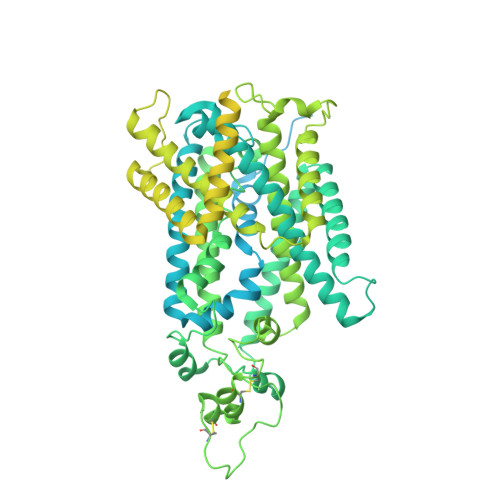Structure and thiazide inhibition mechanism of the human Na-Cl cotransporter.
Fan, M., Zhang, J., Lee, C.L., Zhang, J., Feng, L.(2023) Nature 614: 788-793
- PubMed: 36792826
- DOI: https://doi.org/10.1038/s41586-023-05718-0
- Primary Citation of Related Structures:
8FHN, 8FHO, 8FHP, 8FHQ, 8FHR, 8FHT - PubMed Abstract:
The sodium-chloride cotransporter (NCC) is critical for kidney physiology 1 . The NCC has a major role in salt reabsorption in the distal convoluted tubule of the nephron 2,3 , and mutations in the NCC cause the salt-wasting disease Gitelman syndrome 4 . As a key player in salt handling, the NCC regulates blood pressure and is the target of thiazide diuretics, which have been widely prescribed as first-line medications to treat hypertension for more than 60 years 5-7 . Here we determined the structures of human NCC alone and in complex with a commonly used thiazide diuretic using cryo-electron microscopy. These structures, together with functional studies, reveal major conformational states of the NCC and an intriguing regulatory mechanism. They also illuminate how thiazide diuretics specifically interact with the NCC and inhibit its transport function. Our results provide critical insights for understanding the Na-Cl cotransport mechanism of the NCC, and they establish a framework for future drug design and for interpreting disease-related mutations.
- Department of Molecular and Cellular Physiology, Stanford University School of Medicine, Stanford, CA, USA.
Organizational Affiliation:


















